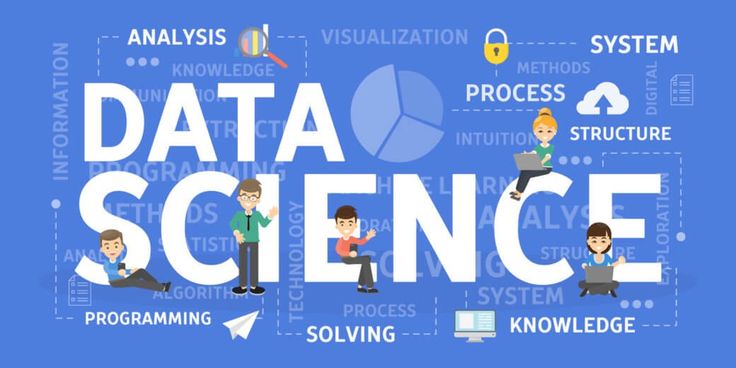In today’s data-driven landscape, both data science and cybersecurity professionals rely heavily on visualization tools to make sense of complex information. Power BI has emerged as a versatile platform that serves both domains exceptionally well, though in markedly different ways. Understanding these differences can help organizations optimize their Power BI implementations and help professionals choose the right career path.
The Fundamental Divide: Prediction vs Protection
Data science and cybersecurity represent two distinct approaches to handling data. Data scientists focus on extracting insights, building predictive models, and discovering patterns that drive business decisions. Cybersecurity professionals, on the other hand, concentrate on identifying threats, monitoring anomalies, and protecting organizational assets from malicious activities.
This fundamental difference shapes how each field leverages Power BI’s capabilities, from data source selection to visualization design and refresh schedules.
Data Sources: Different Worlds, Different Feeds
Data Science in Power BI

Data scientists typically work with structured datasets that tell stories about business performance, customer behavior, or market trends. Common data sources include:
- Customer databases for behavioral analysis and segmentation
- Sales and marketing platforms like Salesforce, HubSpot, or Google Analytics
- Financial systems for revenue forecasting and budget analysis
- IoT sensors and operational databases for predictive maintenance
- Social media APIs for sentiment analysis and brand monitoring
- Survey platforms and research databases for market insights
The data is often clean, well-documented, and follows predictable patterns. Data scientists spend considerable time in Power Query transforming and enriching this data to create meaningful features for analysis.
Cybersecurity in Power BI

Cybersecurity teams deal with fundamentally different data sources that focus on system health, user activity, and potential threats:
- SIEM platforms like Splunk, QRadar, or Azure Sentinel for security event correlation
- Network monitoring tools, including firewalls, intrusion detection systems, and packet analyzers
- Identity management systems track user authentication and access patterns
- Vulnerability scanners and compliance tools
- Threat intelligence feeds from external security vendors
- Endpoint detection and response (EDR) solutions monitor device behavior
- Cloud security tools from AWS, Azure, or Google Cloud Platform
This data is often messy, high-volume, and requires real-time or near-real-time processing. The challenge lies in correlating events across multiple systems to identify genuine threats among thousands of false positives.
Visualization Approaches: Insights vs Alerts
Data Science Visualizations
Data science dashboards in Power BI typically focus on exploration and explanation. Key characteristics include:
Exploratory Analysis: Interactive charts that allow users to drill down into segments, apply filters, and discover correlations. Scatter plots, correlation matrices, and distribution histograms are common.
Trend Analysis: Time-series visualizations showing performance over months or years, with forecasting capabilities using Power BI’s built-in analytics features.
Segmentation Views: Customer or product segmentation using clustering visualizations, often enhanced with custom R or Python visuals.
Statistical Summaries: KPI cards showing means, medians, standard deviations, and confidence intervals that help stakeholders understand data quality and significance.
Predictive Modeling Results: Visualizations showing model performance metrics, feature importance, and prediction confidence intervals.
Cybersecurity Visualizations
Cybersecurity dashboards prioritize rapid threat identification and response coordination:
Real-time Monitoring: Live updating charts showing current system status, active threats, and security metrics that refresh every few minutes or seconds.
Threat Landscapes: Geographic maps showing attack origins, network topology diagrams highlighting compromised systems, and heat maps indicating vulnerability concentrations.
Incident Timelines: Detailed chronological views of security events that help analysts understand attack sequences and response effectiveness.
Risk Scoring: Visual risk assessments using gauge charts, traffic light systems, and priority matrices that guide resource allocation.
Compliance Reporting: Standardized reports showing adherence to frameworks like NIST, ISO 27001, or industry-specific regulations.
Refresh Schedules and Data Freshness
The urgency of decision-making drives different refresh requirements:
| Aspect | Data Science | Cybersecurity |
| Typical Refresh Frequency | Daily or weekly | Every 15-30 minutes |
| Data Latency Tolerance | Hours to days acceptable | Minutes matter |
| Peak Usage Times | Business hours, monthly reviews | 24/7 monitoring |
| Historical Data Value | Critical for trend analysis | Important for forensics |
| Real-time Requirements | Rarely needed | Often essential |
User Personas and Dashboard Design
Data Science Users
Data science Power BI dashboards serve diverse audiences with varying technical expertise:
Business Executives need high-level KPIs and trend summaries with minimal technical jargon. Dashboards focus on business impact metrics and strategic insights.
Product Managers require detailed customer behavior analysis, A/B test results, and feature performance metrics with moderate interactivity.
Data Analysts want full exploratory capabilities with drill-through pages, custom filters, and the ability to export underlying data for further analysis.
Data Scientists themselves need technical metrics like model performance, data quality indicators, and statistical significance testing results.
Cybersecurity Users
Cybersecurity dashboards serve a more specialized but equally diverse audience:
Security Operations Center (SOC) Analysts need real-time threat detection dashboards with clear alert prioritization and incident tracking capabilities.
Security Managers require executive summaries showing security posture, compliance status, and resource allocation effectiveness.
Incident Response Teams need detailed forensic views with timeline analysis, affected system identification, and impact assessment tools.
Compliance Officers want standardized reports demonstrating adherence to regulatory requirements and audit trail documentation.
Technical Implementation Considerations
Data Science Implementations
Performance Optimization: Data science dashboards often work with large historical datasets. Import mode typically works well, with careful attention to data modeling and relationship optimization.
Custom Visuals: Heavy use of R and Python visuals for advanced statistical analysis, custom algorithms, and specialized chart types not available in standard Power BI.
Integration Patterns: Strong integration with Azure Machine Learning, R Services, and Python environments for advanced analytics capabilities.
Data Governance: Focus on data lineage, version control, and reproducible analysis workflows that support scientific rigor.
Cybersecurity Implementations
Real-time Connectivity: Extensive use of DirectQuery and streaming datasets to maintain current threat visibility without overwhelming system resources.
Scalability Planning: Architecture designed to handle sudden spikes in security events during attacks or incidents without performance degradation.
Security Configuration: Enhanced row-level security, data encryption, and access controls that meet stringent security requirements.
Integration Complexity: Complex data source integration requiring custom connectors, API development, and real-time data pipeline management.
Success Metrics: ROI vs Risk Reduction
The value proposition for Power BI differs significantly between domains:
Data Science Success Metrics
Business Impact: Revenue increase from better customer targeting, cost reduction through operational optimization, or market share growth from competitive insights.
Decision Speed: Reduction in time from data to decision, enabling faster response to market changes or customer needs.
Insight Quality: Accuracy of predictions, statistical significance of findings, and actionability of recommendations.
User Adoption: Engagement metrics showing how often stakeholders use dashboards to inform their decisions.
Cybersecurity Success Metrics
Threat Detection: Mean time to detection (MTTD) improvement and reduction in false positive rates that waste analyst time.
Incident Response: Mean time to response (MTTR) and mean time to recovery (MTTR) improvements that minimize damage.
Risk Reduction: Measurable decrease in successful attacks, data breaches, or compliance violations.
Operational Efficiency: Analyst productivity improvements and automation of routine security tasks.
Career Considerations: Choosing Your Path
For professionals considering specialization in either domain, the Power BI skills requirements offer insights into broader career trajectories:
Data Science Path
Technical Skills: Strong statistical background, programming proficiency in R or Python, and deep understanding of machine learning algorithms. Power BI becomes one tool in a broader analytics toolkit.
Business Acumen: Ability to translate business problems into analytical questions and communicate complex findings to non-technical stakeholders.
Industry Flexibility: Data science skills transfer across industries, with Power BI serving various business intelligence needs.
Growth Trajectory: Progression toward chief data officer roles, consulting opportunities, or specialized algorithm development positions.
Cybersecurity Path
Technical Skills: Network protocols, system administration, threat analysis, and incident response procedures. Power BI supports security operations rather than driving them.
Risk Mindset: Constant vigilance, threat modeling, and defensive thinking that prioritizes protection over optimization.
Compliance Knowledge: Understanding of regulatory frameworks, audit requirements, and legal implications of security decisions.
Growth Trajectory: Advancement to chief information security officer roles, specialized penetration testing, or security architecture positions.
Integration Opportunities: The Best of Both Worlds
Forward-thinking organizations increasingly recognize the value of combining data science and cybersecurity approaches:
Behavioral Analytics: Using data science techniques to identify unusual user behavior patterns that might indicate insider threats or compromised accounts.
Predictive Security: Applying machine learning models to historical security data for proactive threat identification and vulnerability prediction.
Fraud Detection: Combining customer analytics with security monitoring to identify fraudulent activities that traditional rule-based systems might miss.
Risk Quantification: Using statistical modeling to quantify cybersecurity risks in business terms, enabling better investment decisions in security controls.
Conclusion: Two Sides of the Data Coin
While data science and cybersecurity serve different organizational needs, both domains benefit tremendously from Power BI’s visualization and analysis capabilities. Data scientists leverage Power BI to communicate insights and drive business value, while cybersecurity professionals use it to maintain vigilance and coordinate responses to threats.
The choice between focusing on data science or cybersecurity often comes down to personal interests and career goals. Those drawn to discovery, prediction, and business optimization will find data science rewarding. Those motivated by protection, investigation, and risk management will thrive in cybersecurity.
Regardless of the chosen path, Power BI skills provide a strong foundation for data visualization and analysis that serves both domains well. As organizations continue to generate more data and face evolving threats, professionals skilled in both Power BI and their chosen specialty will find themselves in high demand.
The future likely belongs to hybrid approaches that combine the predictive power of data science with the protective capabilities of cybersecurity, creating more resilient and intelligent organizations. Power BI will undoubtedly continue evolving to serve both communities as they work together to unlock data’s potential while keeping it secure.